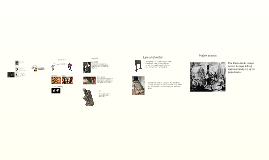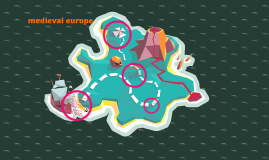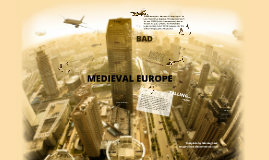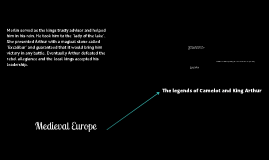medieval europe
Transcript: medieval europe who are the medieval europe? The Dark Ages. That's one of the terms used to describe nearly 1000 years of history-a history that is often hard to understand due to a lack of surviving documents, and often is clouded by myth and legends. Western Europe was under the rule of hundreds of feudal lords and kings. Castles dominated the landscape, and entire cities were built behind protective walls. The Roman Empire formally legalized Christianity during the 4th century, and soon afterward, the zeal and evangelism of practitioners spread this faith throughout Western Europe as far west as Ireland. The Church would be one of the most powerful medieval institutions, controlling publication of books and the making of laws. Much of medieval Europe's art and architecture has a direct connection to the Christian church. Knights, soldiers, peasants and pilgrims marched along European roads and trails during the Crusades and brought back with them stories of differing cultures, and began to adopt their architecture, tales of Romance, and advances in medicine. Trade was both a blessing and curse. Merchants began importing silks, cottons and rare spices from all over the known world. But these ships would also bring the horror that became known as the Black Death. The disease ravaged Asia, before wiping out nearly one-third of Western Europe. the medieval Europe medicines Middle Ages Medicine was extremely basic in an era when terrible illnesses such as the Black Death were killing nearly one third of the population. Medicine was limited. Physicians had no idea what caused the terrible illnesses and diseases. The Catholic Church believed that illnesses were a punishment from God for sinful behaviour. Letting blood was conducted by cupping or leeches. There were no Antibiotics during the Middle Ages and it was almost impossible to cure illness and diseases without them. Medicines in the Middle Ages were made from herbs, spices and resins. The medicine was applied in drinks, pills, washes, baths, rubs, poultices, purges and ointments. The Medicine used to treat some specific illnesses are described below. What kind of medicines did people use in the Middle Ages? The ointment used on Yvain is a good example of what Medieval medicine was like. It comes from a 'wise-woman', Morgan le Fay, rather than a doctor, and has probably been made from herbs, like most medicine of the time. This is a medieval recipe for an ointment to cure headaches and pains in the joints: •Take equal amounts of radish, bishopwort, garlic, wormwood, helenium, cropleek and hollowleek. •Pound them up, and boil them in butter with celandine and red nettle. •Keep the mixture in a brass pot until it is a dark red colour. •Strain it through a cloth and smear on the forehead or aching joints. Did religion affect medieval medicine? Yes! religion definetly affected medieval medicine. Monks believed that god was punishing people, making them ill and to suffer for being a bad person. They also believed that only god could cure the illness/disease that god, himself had given to these people. Monks and nuns would Mildley treat the ill people with natural remadies, such as herbs and crushed up plants to create medicine. bibliography . Read more: http://wiki.answers.com/Q/Did_religion_affect_medieval_medicine#ixzz269LdRhRs Middle Ages Medicine was extremely basic in an era when terrible illnesses such as the Black Death were killing nearly one third of the population. Medicine was limited. Physicians had no idea what caused the terrible illnesses and diseases. The Catholic Church believed that illnesses were a punishment from God for sinful behaviour. Letting blood was conducted by cupping or leeches. There were no Antibiotics during the Middle Ages and it was almost impossible to cure illness and diseases without them. Medicines in the Middle Ages were made from herbs, spices and resins. The medicine was applied in drinks, pills, washes, baths, rubs, poultices, purges and ointments. The Medicine used to treat some specific illnesses are described below.

















